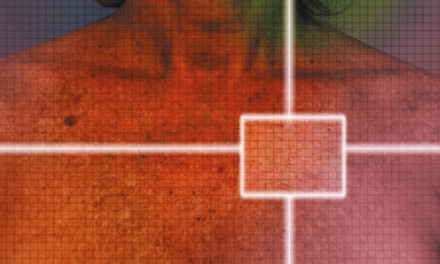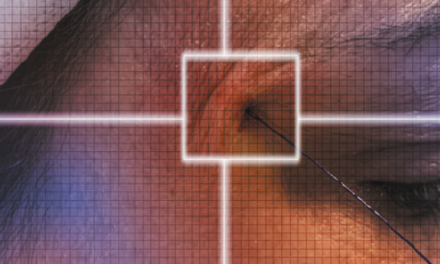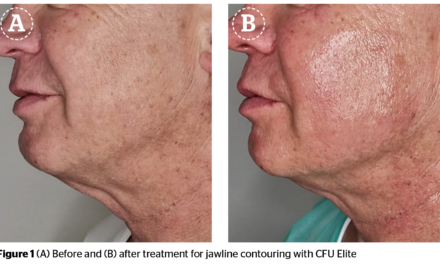Mitchel P. Goldman shares four cases using a novel new topical to improve swelling and erythema post-treatment
Have you ever seen Steve Martin in The Pink Panther? He plays Inspector Clouseau and employs the principle of ‘Good Cop, Bad Cop’ when he interrogates a suspect. Essentially, the Good Cop makes the suspect feel at ease in giving information, whereas the Bad Cop threatens and frightens the suspect to try and achieve the same result. Obviously, the same person cannot play both roles, which is what the good Inspector does to comic effect in the film.
As doctors, we learn of inflammation — a complex biological cascade generated by the body that occurs after injury, which serves to heal the injury. Specifically, acute inflammation, which occurs immediately after an injury, is a temporary event to limit further injury as well as to kick-start the repair and healing process. Inflammation becomes chronic when the inciting or injurious factor is not removed, and in this situation, the inflammatory process persists and begins to damage that part of the body. Both types of inflammation work toward one goal: healing the inflicted wound.
Aesthetic skin resurfacing procedures to remove surface irregularities and pigmentation requires injuring the skin. These procedures include full face chemical peels, dermabrasion and ablative lasers1,2. Patients initially look like they had just emerged from a fire, but they generate fantastic results — only if the duration of inflammation is short and the patient heals fairly quickly. When inflammation persists, not only is the patient’s downtime prolonged, but excessive healing responses are activated which may result in scarring, hypo- and hyper-pigmentation.
Limiting non-specific thermal damage by combining laser technologies3 and fractionating the laser has been employed to limit skin injury and to promote faster recovery4. Lasers have also transitioned from ablative to ‘non-ablative’ (which are really minimally ablative). Dermabrasion has been replaced by microdermabrasion, and chemical peels moved away from corrosive phenol and trichloracetic acid to fruit acids that penetrate more superficially. These newer resurfacing techniques enable more controlled skin wounding in an effort to limit injury, and in doing so, inflammation and downtime.
What can be done post-procedure to further limit excessive and/or prolonged inflammation?
Inflammation comprises the following clinical components that we could assess: swelling, redness, heat, and pain. Although the science of inflammation would fill entire volumes of textbooks these days, these basic clinical signs are still used for assessment of inflammation as it has been the case when Celsus first recorded Tumor, Rubor, Calor, and Dolor in 25 A.D. The same four elements that would contribute to patient downtime.

Figure 2 (A) Decreased edema on patient’s left face treated with CALECIM® Serum at day 4.
(B) Full resolution of both sides by day 7
Twenty years ago fibroblast secreted growth factors were demonstrated to heal wounds and also found to improve the cosmetic appearance of skin when topically applied. This led to the development of SkinMedica’s Tissue Nutrient Serum (TNS), which we used after laser injury to the skin to both promote wound healing as well as new collagen production5.
More recently, a new product called CALECIM®, which comprises the protein growth factors secreted by Umbilical Cord Lining Stem Cells, was introduced to the medical aesthetic community for post-procedure use. Developed by CellResearch Corporation, CALECIM® is cell-free conditioned media containing anti-inflammatory cytokines like Interleukin-10 (IL-10), to decrease inflammation and promote wound healing and fibroblastic function when applied to the skin after skin resurfacing therapy.
The best way to assess this was to use the split-face technique: treating half the face with CALECIM® Professional serum after full face fractional laser resurfacing so that the untreated side served as a comparison (control).

Figure 3 (A) Pre-laser, (B) post-laser and 30 minutes after CALECIM® Serum application on patient’s left face (indicated with the blue arrow). (C) CALECIM® Serum treated side, reduced swelling and erythema. (D) Non-treated control side
Case 1: Treatment by Dr. Dan Kim, Orange County, CA
This 64-year-old female (Figure 1) had full face fractional CO2 laser treatment (Lumenis Inc. Santa Clara, CA) using the following settings: 50mJ energy, 50 Hz, density setting 3, followed by immediate application of CALECIM® Professional serum on her left face (arrowed). Photos were taken 30 minutes after serum application.
The most striking observation here was the marked decrease in redness (erythema) on the treated side — one of the key clinical indicators of inflammation.
Case 2: Treatment by Dr. Dan Kim
This 34-year-old female (Figure 2) had sequential Day 4 and Day 7 pictures taken after fractional CO2 laser treatment (same parameters as Case 1) followed by application of CALECIM® Professional serum to the left face.
The decrease in swelling (edema) and redness (erythema) on the CALECIM® Serum treated side was very clearly seen in the Day 4 photograph.

Figure 4 (A) Pre-laser, (B) post-laser and 30 minutes after CALECIM® Serum application on patient’s left face (indicated with the blue arrow). (C) CALECIM® Serum treated side, reduced swelling and erythema. (D) Non-treated control side
Case 3: Treatment by Dr. Cheryl Effron, Anaheim, CA
This 57-year-old male (Figure 3) had full face fractional CO2 laser treatment (Cynosure Smartskin, Cynosure Inc., Westford, MA) using the following settings: 20W, 400μs dwell time, 350 μm pitch, after which his left face was treated with CALECIM® Professional Serum.
Photos were taken before laser treatment and 30 minutes after laser treatment followed by immediate CALECIM® Professional Serum application.
The treated left face showed visually significant decrease in redness (erythema) and swelling (edema), indicating a decrease in inflammation. The patient also reported that the treated side felt less painful and hot.
Case 4: Full face fractional CO2 laser treatment by Dr. Cheryl Effron
Similar results were reported by this 48-year-old woman (Figure 4) who also had full face fractional CO2 laser treatment (treatment parameters identical to Case 3) followed by application of CALECIM® Professional serum on her left face.
Once again, the CALECIM® Professional serum treated side demonstrated decreased redness (erythema) and swelling (edema), clinically indicating that inflammation was decreased. Symptoms of heat and pain were also diminished on the treated side.
This case series demonstrates that application of CALECIM® Professional serum can decrease inflammation, indicated clinically by decreased redness (erythema) and swelling (edema), as well as decreased symptoms of heat and pain. This is likely due to the presence of IL-10 and other anti-inflammatory protein cytokines found in this stem cell conditioned media.








